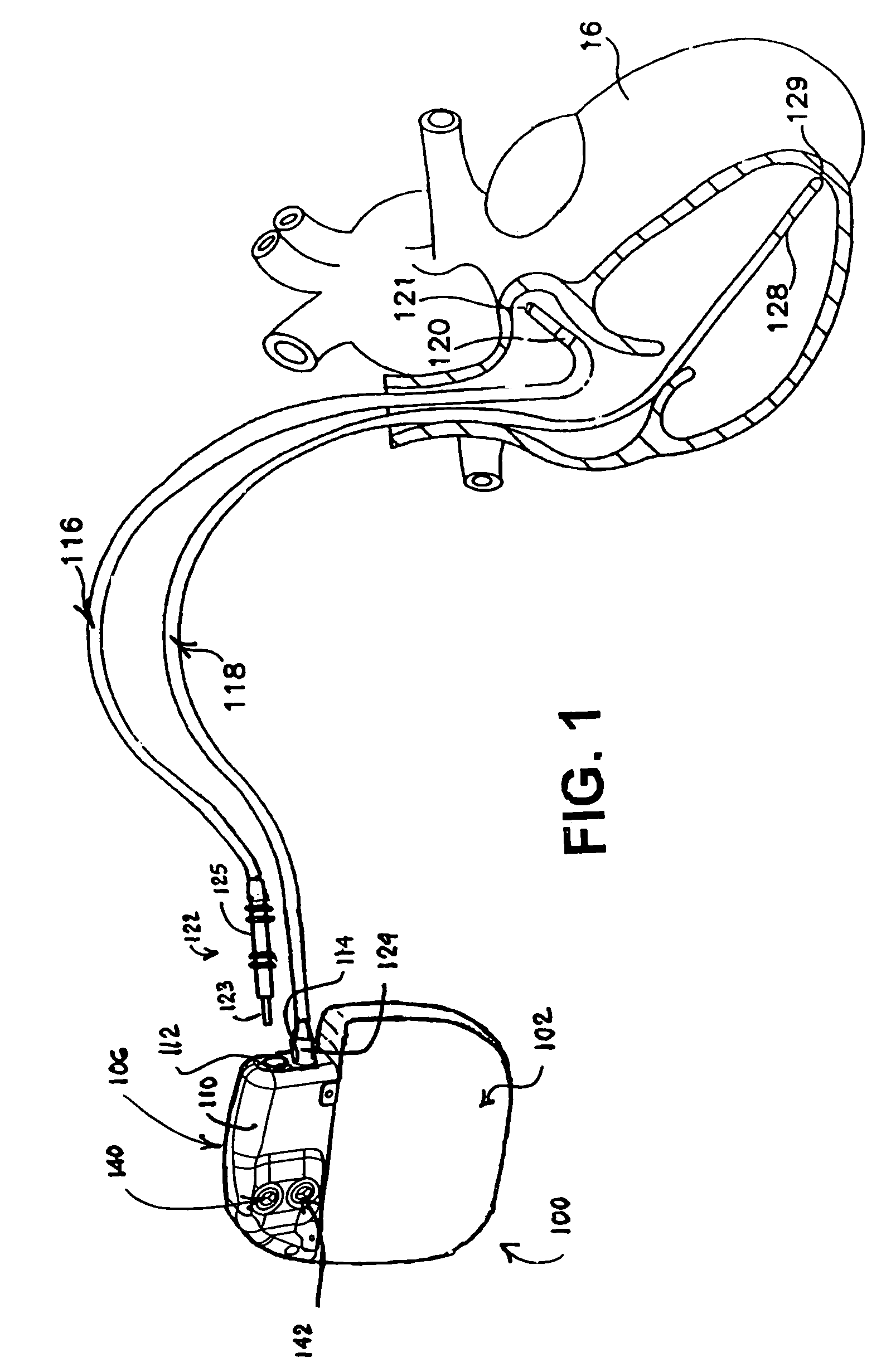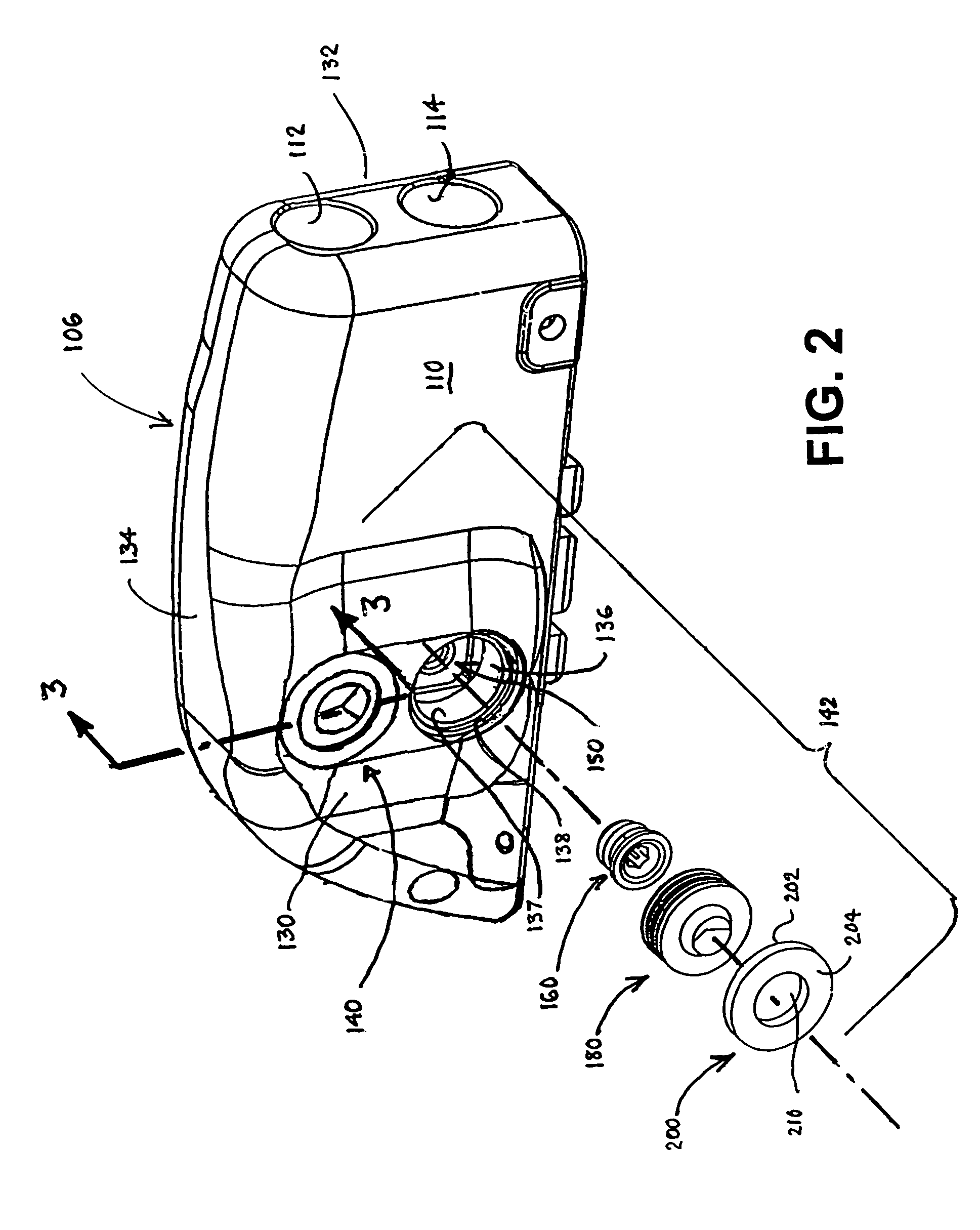Sealing or closing the further header aperture from fluid intrusion is a somewhat more difficult problem to solve, and various methods have been developed and implemented over the years.
The cured
silicone rubber
adhesive is also difficult to remove after chronic implantation to be able to replace the electrical medical lead or the IPG or monitor.
Fitting very small rigid or flexible plugs into the further header aperture is difficult, and they can be dislodged and lost during the procedure.
In addition, due to their small size, both are quite difficult to
handle directly by hand, which is quite undesirable during
surgery.
It is also not possible to immediately confirm that a fluid tight seal has been achieved.
Again, the combined plug and setscrew can be mishandled, and it is also not always possible to confirm that a fluid tight seal has been achieved.
Moreover,
epoxy connector bodies remain relatively rigid and dimensionally stable during chronic implantation, so that separation and loss of adhesion does not readily occur.
The use of the penetrable grommet simplified manufacturing and solved many of the problems associated with use of separate caps or plugs that the physician had to use to fill the further header aperture as described above, but other problems were observed over time.
The in situ molding process for forming the connector header body does not lend itself to
mass production, since it does not involve use of
interchangeable parts, and because the steps have to be done carefully and slowly.
Bubbles, voids, surface blemishes and other defects can occur requiring
rework or scrapping of the product.
These drawbacks became more apparent and difficult to resolve as connector headers were reduced in size and incorporated increasing numbers of connector blocks and feedthroughs.
However, problems have been observed as the size of the pre-formed penetrable grommets and the corresponding header grommet apertures have been reduced.
However, the possibility of
coring the pre-formed penetrable grommet by the hex
wrench inserted through the pre-formed slit increases as the
diameter of the pre-formed penetrable grommet is decreased.
Whether or not such an approach has merit, fabrication of such a pre-formed grommet with a rigid, ring-shaped, stiffener element may be difficult.
Even the proper
insertion of the hex wrench through the pre-formed slit can also cause loss of adhesion of the grommet to the grommet aperture wall surrounding it unless the penetrable grommet is designed to yield and distribute stresses away from the grommet aperture wall as the hex wrench is advanced through the slit.
The
silicone rubber of the pre-formed penetrable grommet does not inherently adhere well with the material, particularly, TECOTHANE® urethane, of the pre-formed connector header body.
Forming one or more retention
ridge in the header grommet aperture sidewall to engage the sidewall of the
silicone rubber grommet as shown in the above-referenced '928 patent, for example, is difficult if not impossible due to the injection molding of the pre-formed connector body from TECOTHANE® urethane.
Other problems have been observed with the use of silicone rubber to form such penetrable grommets and urethanes to form connector header bodies.
The
epoxy or urethane connector header body and the silicone rubber grommet are both translucent and substantially colorless or of a slight color such that there is little visible contrast therebetween, rendering it difficult to visually distinguish a penetrable grommet from the surrounding connector header body and to locate the pre-formed slit.
This could cause damage to the penetrable grommet compromising the ability of the pre-formed slit to reseal.
After prolonged storage or chronic implantation, it becomes more difficult to insert a hex wrench through the pre-formed slit without
coring or dislodging the penetrable grommet from the header grommet aperture.
It has also been found that connector header bodies formed of TECOTHANE® urethane exhibit cold flow or
creep at points or surfaces where pressure is applied chronically.
It has been observed that adhesion is lost between the grommet and header grommet aperture sidewalls when the grommet exerts pressure over time against the header grommet aperture sidewall causing expansion of the header grommet aperture
diameter.
In addition, the TECOTHANE® urethane connector header body becomes slightly less rigid and dimensionally stable during chronic implantation in body fluids thereby aggravating the cold flow problem and negatively affecting adhesion with the silicone rubber grommet over time that can lead to spontaneous dislodgement of the grommet.
Further problems arise as the setscrews and connector blocks are miniaturized.
As noted above, it can be difficult to locate such a shallow setscrew socket with the hex wrench, and
adhesive and / or dislodged silicone rubber can block the shallow setscrew socket.
One problem that has occurred due to the tolerances and the involves the inappropriate positioning during manufacture or spontaneous movement of the setscrew within the threaded bore due simply to handling and shipment that cannot be observed when the setscrew is covered by the penetrable grommet.
The physician inserting the connector lead element into the connector block bore may incorrectly assume that it is properly inserted and tighten down the setscrew without making contact, resulting in a connection failure that may or may not be detected at the time of implantation.
Therefore, despite the improvements that have been made in connector headers over the years, problems remain to be solved in the design and fabrication of connector headers of the type employing penetrable grommets disposed in header grommet apertures overlying fasteners, e.g., setscrews, employed to attach lead connector elements with connector blocks of the connector header.
 Login to View More
Login to View More  Login to View More
Login to View More 


